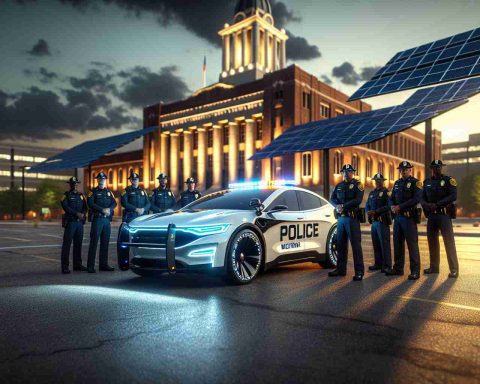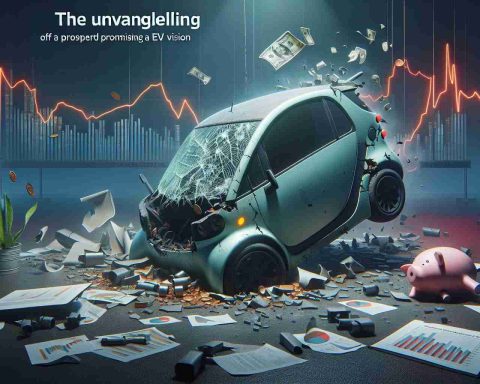Innovation in Berlin’s Public Transit
The Solaris Urbino 18 electric bus has made headlines as the first series-produced bus equipped with a battery passport. This groundbreaking vehicle recently joined the BVG fleet in Berlin, marking a significant advancement in sustainable public transport. The battery passport serves as a comprehensive digital document that outlines essential details about the battery’s origin, materials, and environmental impact, promoting responsible management of raw resources.
Solaris achieved this milestone three years ahead of EU regulations, which will enforce the inclusion of battery passports in all electric vehicles by 2027. The newly arrived Urbino 18 boasts Solaris High Energy batteries with an impressive capacity of approximately 700 kWh. This bus is the first of 50 articulated electric buses ordered by BVG Berlin, with the complete delivery expected by 2025, all featuring battery passports.
As mandated by the recent EU Regulation (EU) 2023/1542, these digital certificates will become essential for each battery in electric vehicles starting in 2027. The battery passport provides vital information, such as the chemical makeup, critical raw material content, carbon emissions, and the proportion of renewable materials, ensuring transparency throughout the battery’s lifecycle.
By making this information readily accessible, including via a QR code on the bus, Solaris aims to enhance the sustainability of electric vehicles, ensuring ethical sourcing of valuable materials like lithium and cobalt while promoting efficient recycling processes.
Revolutionizing Public Transit: The Future of Electric Buses in Berlin
Berlin is taking a significant step forward in sustainable public transport with the introduction of the Solaris Urbino 18 electric bus, the first series-produced bus equipped with a revolutionary battery passport. This cutting-edge vehicle has recently joined the fleet of Berliner Verkehrsbetriebe (BVG), demonstrating a commitment to both innovation and environmental responsibility.
Features of the Solaris Urbino 18
Equipped with high-capacity Solaris High Energy batteries offering around 700 kWh, the Urbino 18 is designed for long-range travel, making it an ideal choice for urban transit. This electric bus is not only part of a larger commitment by BVG to modernize its fleet—50 articulated electric buses are on order, with complete delivery expected by 2025—but it also represents a pioneering effort toward sustainability through the use of battery passports.
Understanding the Battery Passport
The battery passport is set to transform how batteries are managed and tracked in electric vehicles. Under the new EU Regulation (EU) 2023/1542, which mandates the inclusion of battery passports by 2027, this digital document will provide comprehensive information regarding:
– Chemical Composition: Detailing the materials used in battery construction.
– Raw Material Sourcing: Transparency in the ethical sourcing of materials such as lithium and cobalt.
– Carbon Footprint: Information on the emissions associated with the battery’s production.
– Recycling Information: Guidelines to facilitate efficient recycling at the end of the battery’s lifecycle.
This initiative not only enhances sustainability but also promotes responsible environmental practices across the industry.
Pros and Cons of Electric Buses
# Pros:
– Environmental Impact: Reduces greenhouse gas emissions significantly compared to diesel buses.
– Operational Cost Savings: Lower fuel and maintenance costs over time.
– Technological Advancement: Incorporation of innovative features like battery passports boosts accountability.
# Cons:
– Initial Investment: Higher upfront costs associated with purchasing electric buses and infrastructure.
– Charging Infrastructure: Requires extensive and robust charging facilities, which can be a logistical challenge.
– Battery Lifespan Concerns: Life expectancy and performance degradation of batteries over time may pose limitations.
Market Trends and Insights
The electric bus market is rapidly expanding, driven by stricter regulations on emissions and a growing demand for sustainable public transportation options. As cities around the world seek to modernize their fleets, innovations like the battery passport will likely become standard practice, enhancing the appeal of electric public transport worldwide.
Innovations on the Horizon
The introduction of the battery passport not only represents a leap in technology but also signifies a trend where transparency and sustainability become integral to vehicle manufacturing and operations. Future innovations may include advancements in battery technology, leading to enhanced performance and reduced environmental impact.
Conclusion
The Solaris Urbino 18 electric bus symbolizes a new era for public transport in Berlin, where sustainability and transparency are paramount. As Europe moves towards stricter regulations and greater accountability in electric vehicle manufacturing, initiatives like the battery passport will play a crucial role in shaping the future of sustainable urban mobility.
For more information on electric vehicles and sustainable transport initiatives, visit BVG.













